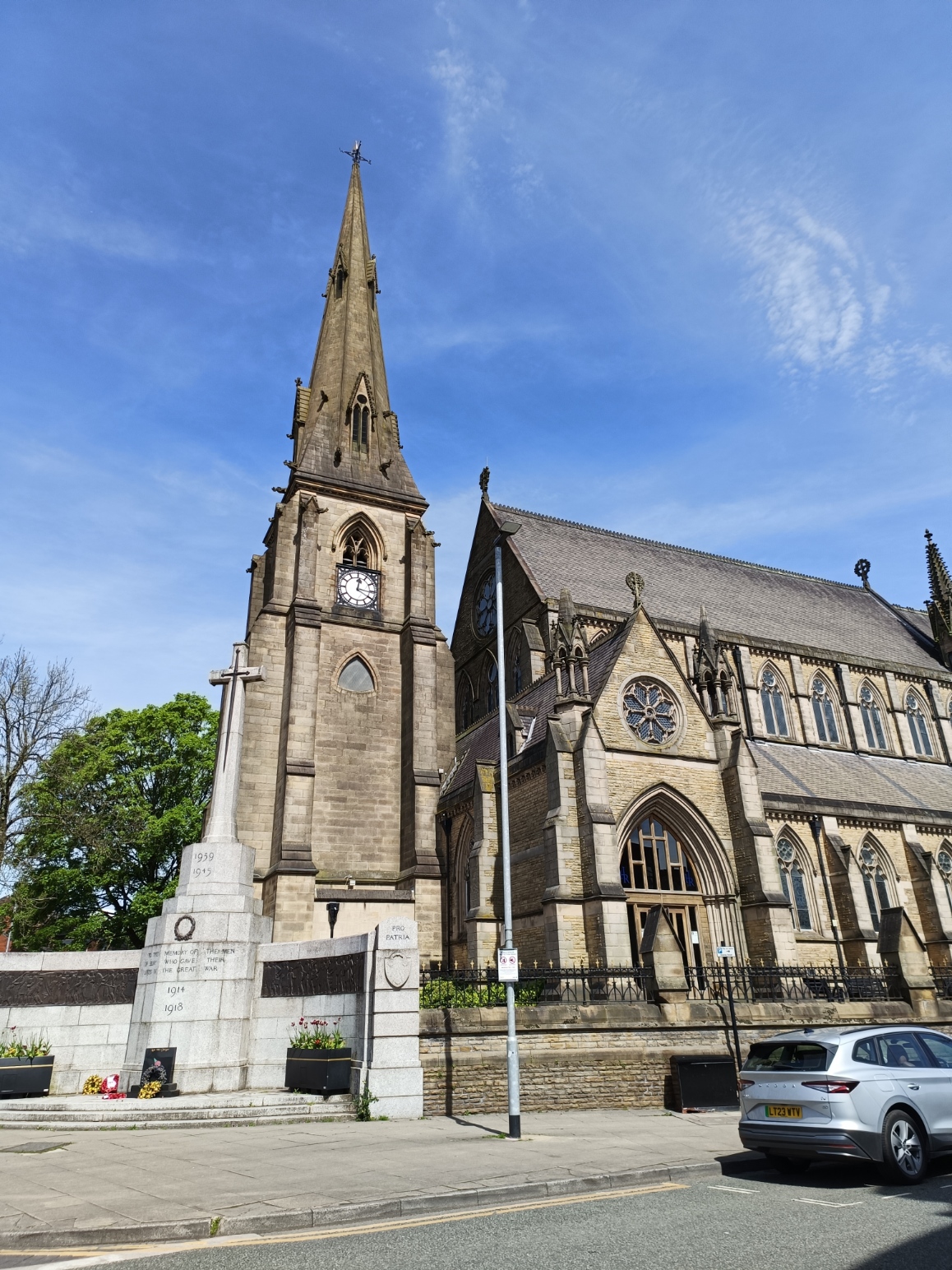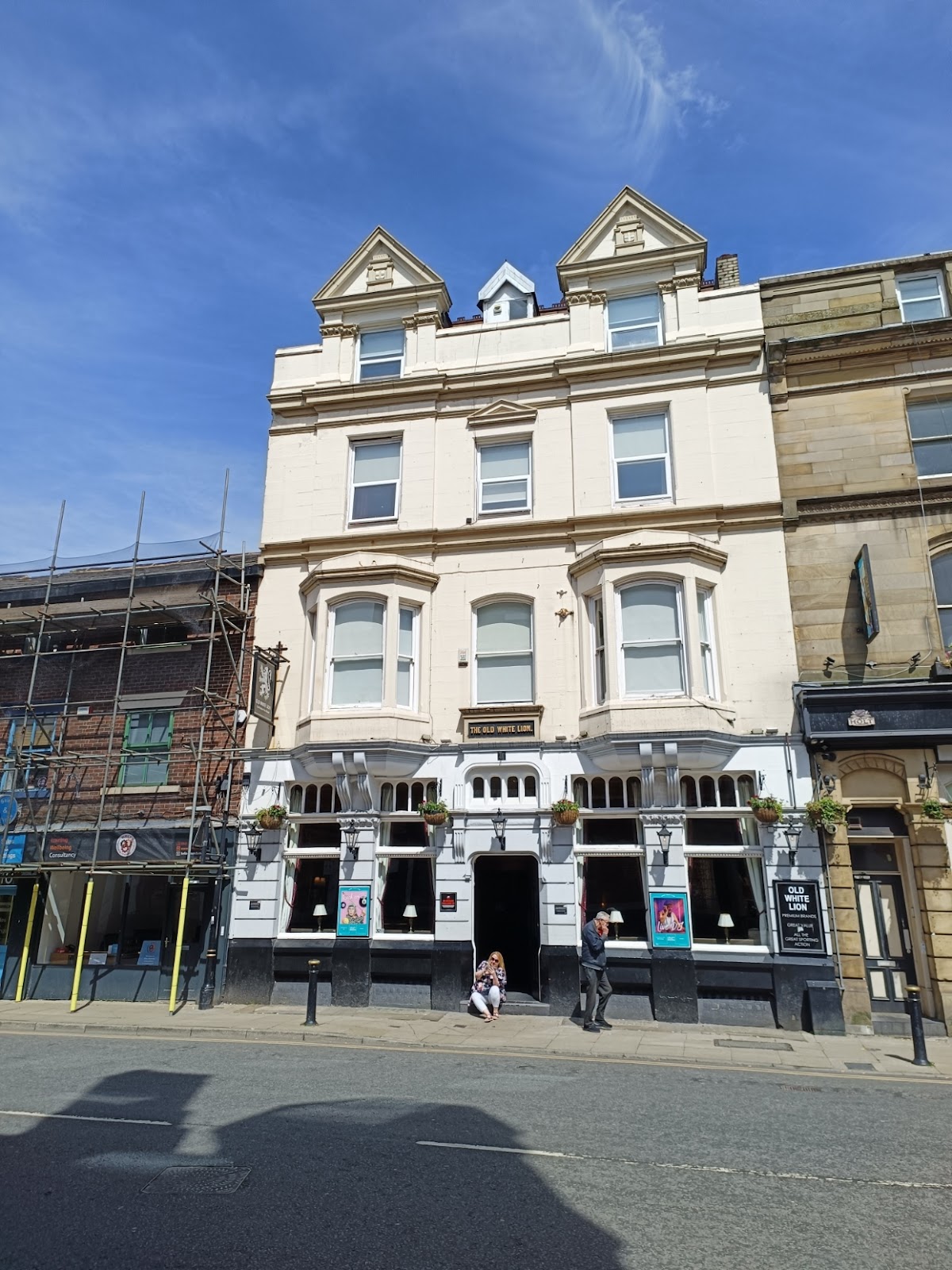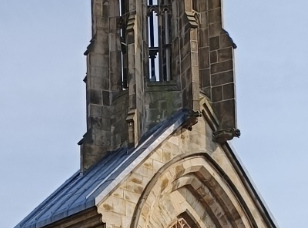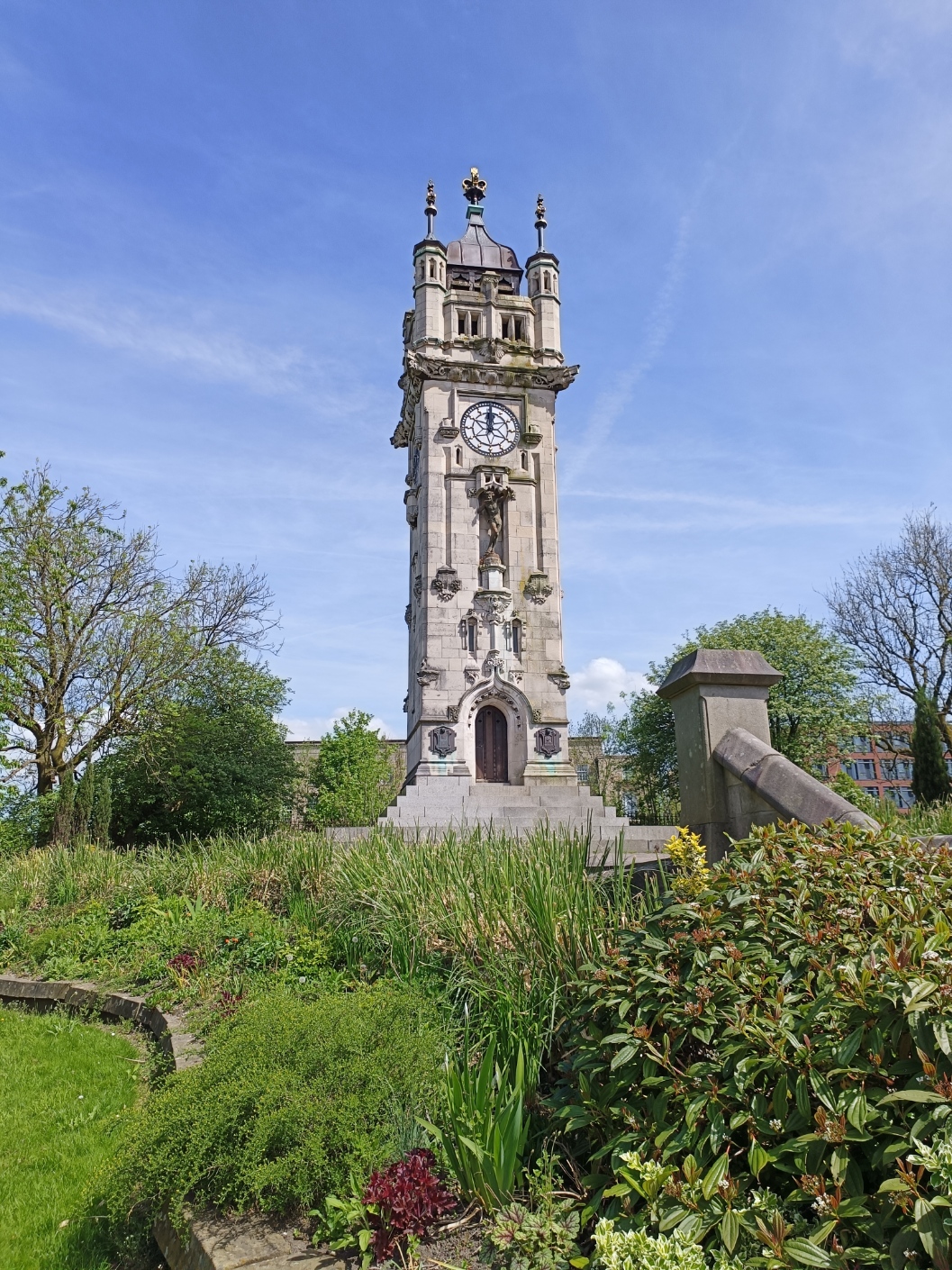Bury
Bury is a market town about ten miles north of Manchester, and thirty miles southeast of Preston. Formerly in Lancashire, it is now in Greater Manchester. It was on the Roman road from Manchester to Ribchester.
Today the town has two big claims to fame; the black pudding market and the East Lancs Railway. And I must admit, I did not visit the market...
The original East Lancashire Railway operated from 1844 to 1859 between Liverpool, Manchester, Salford, Preston, Burnley and Blackburn.. Their line into Manchester run through Bury, and they had a station, Bolton Street. Bury also had a second railway, going east to west, connecting Oldham and Bolton, on the Lancashire and Yorkshire, with a station at Knowsley Street. the two companies were fierce rivals, until 1859 when the East Lancashire was adsorbed into the Lancashire and Yorkshire Railway. Bolton Street station burned down in 1947; the building we can see today dates from 1952.
Knowsley Street Station closed in 1970, and nothing remains of it.
In 1980 British Rail opened a new station, Bury Interchange, to replace Bolton Street, at the end of a new stretch of track that cuts through where Knowlsley Street station had been more-or-less at a right angle. I think goods trains continued north through Bolton Street, but the line was closed altogether in 1982 - Bury Interchange is a terminus. In the early nineties, the line from Manchester became part of Metrolink. The station is below the bus station, and frankly not worth a photo...
Bolton Street station was taken over by a heritage railway, also called the East Lancashire Railway, originally running from Bury to Ramsbotton, from 1987, and later along the former L&Y to Heywood.
The station very much has the feel of an urban station, which is unusual for a heritage railway.
Enough of railways! Across the road from Bolton Street Station, and down a short alley is the Castle Armoury.
This impressive building was the headquarters of the 8th Lancashire Rifle Volunteer Corps, and was built on the remains of Bury Castle, the first section in 1868. There is a trench in front of it where some castle remains can be seen, but there really is not much of that at all. Wiki tells me the building has been condemned since 2022.
To the right of it is the Two Tubs pub. In the image, the Castle Armoury is the building to the right, behind the pub - from this side it looks more like an industrial building. The pub dates to the seventeenth century.
Across the road is the Church of St Mary the Virgin (the pub is off the left of the image).
Beyond the church is this impressive building. The "Union Club Building" was built in 1874, and at some point was Martins Bank.
The main shopping street is further down that road, but while busy and good for shopping, lacked anything with much character.
Just south of the Two Tubs and the church is a small square, I think the market place. This features a statue of Sir Robert Peel, former prime minister, most famous for creating the Metropolitan police, and who was born in Bury. The statue is on the far right in the image, and the pub just right of centre is called "The Robert Peel".
His father was also called Sir Robert Peel, and it is just possible the statue and/or pub are named after him instead.
If you are wondering who Joseph Holt is, that is a brewery; the pub on left is called the Wyldes, which is the name of the road between Two Tubs and the church.
Behind the Wyldes, back towards the station, is the Old White Lion.
Heading south from the market place, we get to Kay Gardens, with the Interchange just to the south of it. Not much in the way of gardens there - perhaps there used to be more.
Continuing south, on the west side is Art Picture House, a wonderful Art Deco building that opened in 1921-22. Later a snooker hall, it is now a Wetherspoons.
Kind of behind that is the church of St Marie. To me it looks like they built it without a tower, but then one became available, and so they plonked it on top, even though it did not quite fit, and hence the buttresses on the tower are just hanging in the air.
Continuing south, along what becomes Knowsley Street, there is the town hall. Designed in the 1930s, it was not opened until 1954. More functional than aesthetic in my view.
Over the railway is Whitehead Gardens, featuring an impressive clocktower at the north end...
... And war memorial at the south end. The gardens and clocktower were built in 1914, at the expense of Henry Whitehead to remember his brother Walter. The war memorial would, of course, be a few years later. According to here, news of the assassination of Archduke Ferdinand arrives pretty much the day the gardens opened; was that a reason to site the war memorial here?
Just beyond it is the Victoria Jubilee Drink Fountain.
Bury is not a big place, but I will admit my visit was a little cursory, so apologies if I missed something important! I reserve the right to add more if I ever go back.


















Comments
Post a Comment